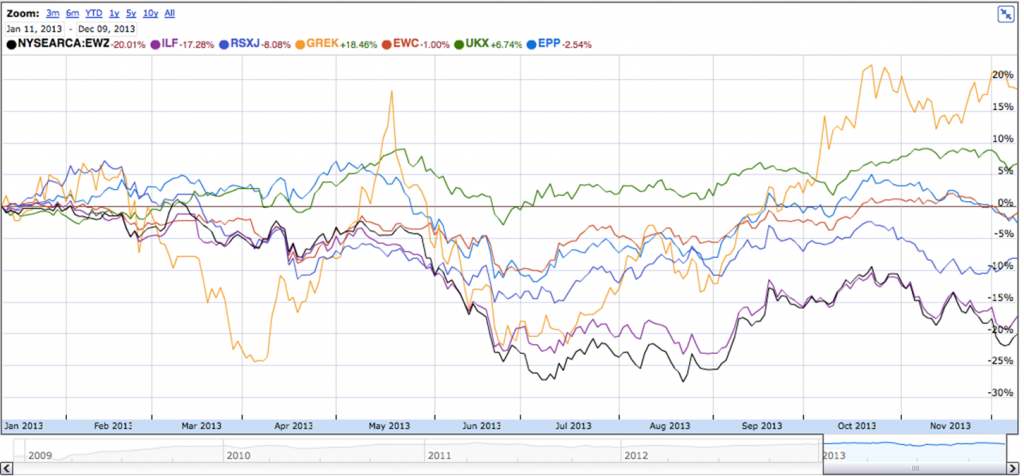In early 2013, some hedge funds made an easy profit investing heavily in Japan. The news that Shinzo Abe, Prime Minister of Japan, would aggressively increase the monetary base to fight Japan’s stubborn deflationary spiral, was a pretty obvious indicator that Japanese stocks would rise. And rise they did; the Nikkei 225 rose 32% by the end of May, and are up over 50% for 2013.
Investing abroad is higher risk, higher reward, and can be done strategically or passively through large-scale ETFs. In Japan’s case, investors could simply buy the Japan ETFs (EWJ, DXJ) and be guaranteed a good return.
Good, but not stellar. In fact, both of these funds have radically underperformed the Nikkei 225 and are even below the S&P 500, so neither is a phenomenal play on Japan’s QE. This is where a true international reach is beneficial; for traders with rights to trade on the Tokyo Stock Exchange, the Nikkei 225 ETF (TYO:1329) is up 48.77% YTD, only a hair below the actual index.
For an investor seeking diversification and a true global outreach, dipping into foreign stock exchanges worldwide can be difficult—but for professionals, it’s an essential tool in the toolbox.
Even without that ability, though, investors can profit from a global outlook. There are plenty of ETFs that focus on a single country or a region, and can give investors exposure to one or several nations at once. These are far from perfect, as the case of the Japanese ETFs demonstrate, but they work in a pinch.
Looking at the performance of these foreign-focused ETFs in 2013, many seem ripe for investor interest after U.S. equities rise by 30% in one year:
These funds cover Latin America, Europe, and Asia and, with the exception of the Greek and UK ETFs, all are down. But even GREK and UKX are underperforming, especially on a risk-adjusted basis. Unquestionably, investors will focus their interest on these regions in 2014 with the trickle-down hypothesis in mind: after the U.S. sees recovery, that recovery will spread abroad.
The big question is when and where. There’s no way to know if America’s recovery will benefit, say, Brazil first, or if China will benefit beforehand, or if maybe Russia will somehow start to improve before either. Or maybe western Europe will recover beforehand on news of a major monetary reform from the ECB, emboldened by Abe’s initial success.
For those who just want to get capital abroad, they can buy a little of each. But overdiversification dilutes returns, so this will likely provide limited alpha. Alternatively, they can do their due diligence, deep research, and formulate a hypothesis that one region will benefit more from the changing economic tides than others. This, after all, is what being a full-time investor is all about: understanding what people are really doing out there in the real world, and investing accordingly.

